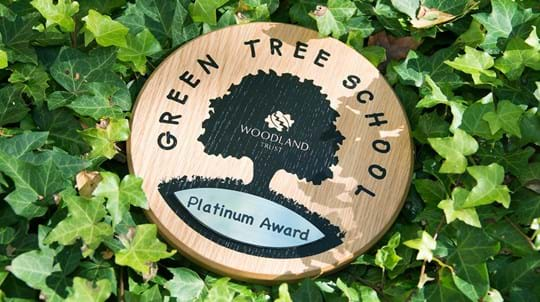
Support us
Green Tree Schools Award
Join 14,000 schools taking part in our award scheme and complete environmental projects to earn certificates for your pupils.
Help us celebrate 15 years of the Green Tree Schools Award by completing 15 eco challenges.
We created this bumper challenge to celebrate the 15th anniversary of the Green Tree Schools Award.
Since its launch in 2008, our environmental award scheme has inspired 14,000 schools to do more outdoor learning and contribute to a greener, healthier environment. As a result, we’ve helped thousands of pupils and teachers enjoy and care about nature.
This challenge features 15 eco activities and gives schools the opportunity to explore woods, trees and wildlife while taking positive action for the planet.
This challenge is worth five points on the Green Tree Schools Award. To claim your points, you need to send us evidence showing how you've completed five or more 'Go green in 15' activities. You can do the activities in any order and at any time. Once you've completed this challenge, you'll also receive a printable certificate for your school.
Tell us about your school’s experience on the Green Tree Schools Award. Were you one of the first to take part or have you just started your journey? Have you peaked at the platinum level or are you enthusiastically working through bronze, silver and gold?
We’d love to hear how the Green Tree Schools Award activities has had an impact on your school community. Share your stories and photos using #Green15 on social media and email them to us when you get in touch to claim your points.
Record 15 different tree species in your school grounds and local area. Use our free tree ID resources to help you identify them by their leaves, seeds or flowers. Gather evidence by taking photos or doing bark and leaf rubbings, then share your discoveries with us.
People have enjoyed, respected and celebrated trees for thousands of years. Challenge your pupils to research the role of trees in different cultures and religions and present their findings to the class. They might like to explore the significance of the Bodhi Tree in Buddhism, investigate the popularity of Hanami blossom parties in Japan, or discover why people decorate trees at Christmas.
Record 15 different species of wildlife in your school grounds or on a class trip to the woods. Use our printable wildlife ID tools to identify birds, beetles and droppings. Binoculars, bug pots and magnifying glasses will help you get a closer look. Encourage students to jot notes, draw pictures and take snaps to stick in a nature diary, then send us photos as evidence.
Take your class outdoors and enjoy the sights and sounds of nature. Trees and green spaces are fantastic for boosting pupil wellbeing, as well as providing heaps of inspiration. You can use natural items like acorns and conkers as maths counters, plan an outdoor yoga session for PE, or use a wooded space as a brilliant natural stage for drama classes!
Ask pupils to write about their experience and how they felt outdoors, then share their thoughts with the rest of the class. You can send us photos of your outdoor lesson or your students' written reports.
Do you go through lots of exercise books and paper in your school? Challenge your pupils to think of inventive ways you can cut down your paper usage to help the environment. Switching to paper from sustainable sources is also a fantastic way to reduce your impact on the planet.
Did you know? The Woodland Trust has its own printer paper. We receive a donation from every pack sold that helps us plant trees and create new woods. These trees fight climate change, provide homes for wildlife and create green spaces for communities to enjoy – hurrah!
Reading outdoors is a multi-sensory experience that has many benefits for all ages. Nature’s soothing sounds and soft breezes create a peaceful environment where readers can focus their minds and concentrate on the story. So, take your books outside and let the natural space inspire your pupils.
Choose a book about trees or wildlife and let your surroundings set the scene. Students can read aloud or act out parts of the story. You can even make it a regular event so youngsters experience the changing seasons – settle down among crunchy leaves in autumn, wrap up warm for a cosy story in winter and enjoy leaf-dappled sunlight in spring and summer.
Ask your class to work together to produce a piece of art using fallen leaves, seeds, pebbles and petals. Encourage students to research the land art movement and get inspired by artists such as Andy Goldsworthy and Richard Shilling. Pupils can also identify the natural materials they choose and explore the look, feel and properties of each item. Don’t forget to send us photos of your finished artwork.
What gets your pupils excited about the natural world? Ask them to bring in an interesting item related to nature or the environment and share a story about it with the rest of the class. It could be a prized conker collection, a leaf from their favourite tree, a drawing of their favourite animal, or a photo from a memorable adventure outdoors. At the end of the session, discuss any common interests or unique objects.
Team up with a local school and share how you each take positive action for the environment. Visit each other to see how green initiatives like recycling, eco clubs and tree planting have made a difference – you can learn from their experiences and share your own. Tell us about the ideas exchanged and if you’ve adopted any new environmental measures in your school as a result.
Did you know thousands of books are thrown away each year? What a waste! Your school can make a difference by starting a book exchange. Simply set up an area in school where pupils can donate unwanted books and borrow books to read at home. Teachers and parents could do one too. It’s a brilliant way to encourage reading and prevent books going in the bin, saving paper and trees.
Trees are incredible! They boost our health, provide clean air and shade, support wildlife and much more. So choose a special tree in your school grounds or local area and show it some love. Tree dressing is a fun way to connect to your tree while recognising its important contribution. Your pupils can make bunting and ornaments to decorate the tree, and you can invite the whole school community to an event in its honour.
Want to plant your own special trees for future pupils to enjoy? Check out our free tree packs for schools and communities.
Bring the sustainability message to life with a second-hand clothes day. Encourage pupils and teachers to wear hand-me-downs and charity shop bargains, or swap outfits with friends. You could award prizes for the best dressed or the most outrageous ensemble. It’s fantastic for enthusing youngsters about the three Rs – reduce, reuse, recycle. Plus, it’s a greener and more inclusive way to celebrate World Book Day and Christmas Jumper Day.
Make a display about your journey on the Green Tree Schools Award and show your school what you’ve done for this challenge. Include photos, drawings and quotes from pupils. Alternatively, you could present an assembly to the whole school sharing your story.
We’d love to hear what you’ve done for this challenge. Which activities have you completed? Have you done all 15? What did your pupils enjoy the most? Tell us what you’ve achieved and how you’ve made your school greener by writing a report, filming a video or making a PowerPoint presentation.
This challenge is worth five points on our award. To claim them, you need to show us how you’ve completed five or more of the challenges above. This could be photos of classroom displays, reports written by pupils, links to social media posts etc.
Gather all the evidence from your completed challenges into one email and send it to learning@woodlandtrust.org.uk with the subject line 'Green 15 challenge'. Make sure you clearly highlight which activities you’ve done.
We’ll add your points to your account after we’ve received your evidence and email your certificate to you (usually within two weeks).
We like to use comments and photos from schools to inspire other teachers and young people about outdoor learning. With your permission, they could appear on our award materials, website, press releases and social media.
You can find out more about how we use and look after your personal information in our privacy policy.
If you're happy for us to share your quotes and photos as outlined above, please include the following permission statements in your email:
If you'd rather we didn't share them, please include the following statement in your email:

Support us
Join 14,000 schools taking part in our award scheme and complete environmental projects to earn certificates for your pupils.
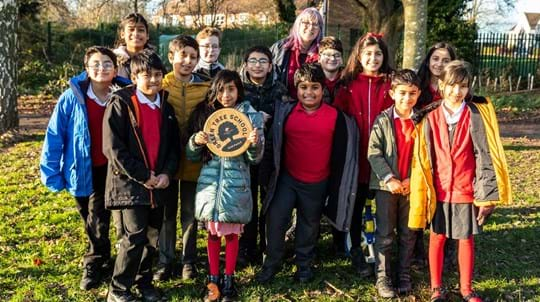
Support us
Tell us about your journey on the Green Tree Schools Award.
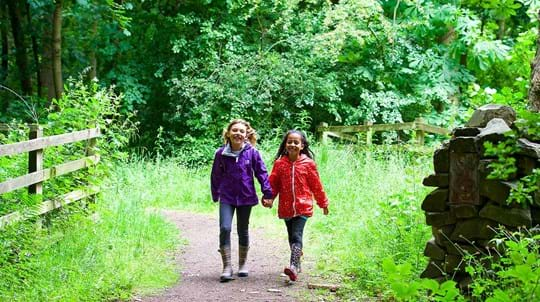
Support us
Use the power of nature to boost the health of your students.
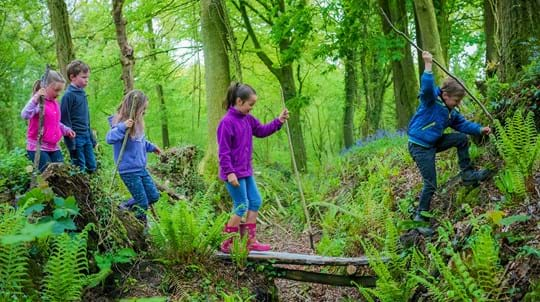
Support us
Take your pupils on a real adventure and explore the most exciting outdoor classroom of all.
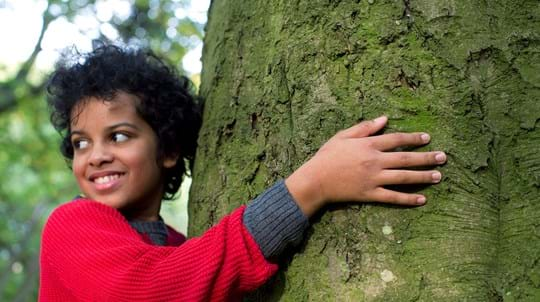
Support us
Share your enthusiasm for trees and spread the word that woods are good!

Support us
Harness pupil power to cut your school’s waste.
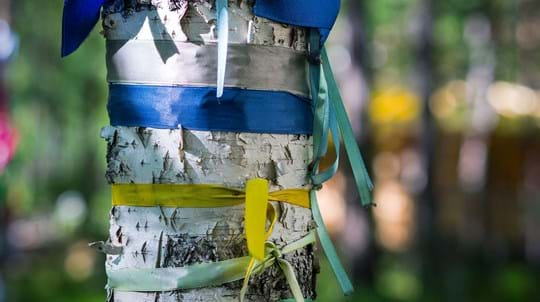
Support us
Celebrate a special tree with decorations made by your pupils.